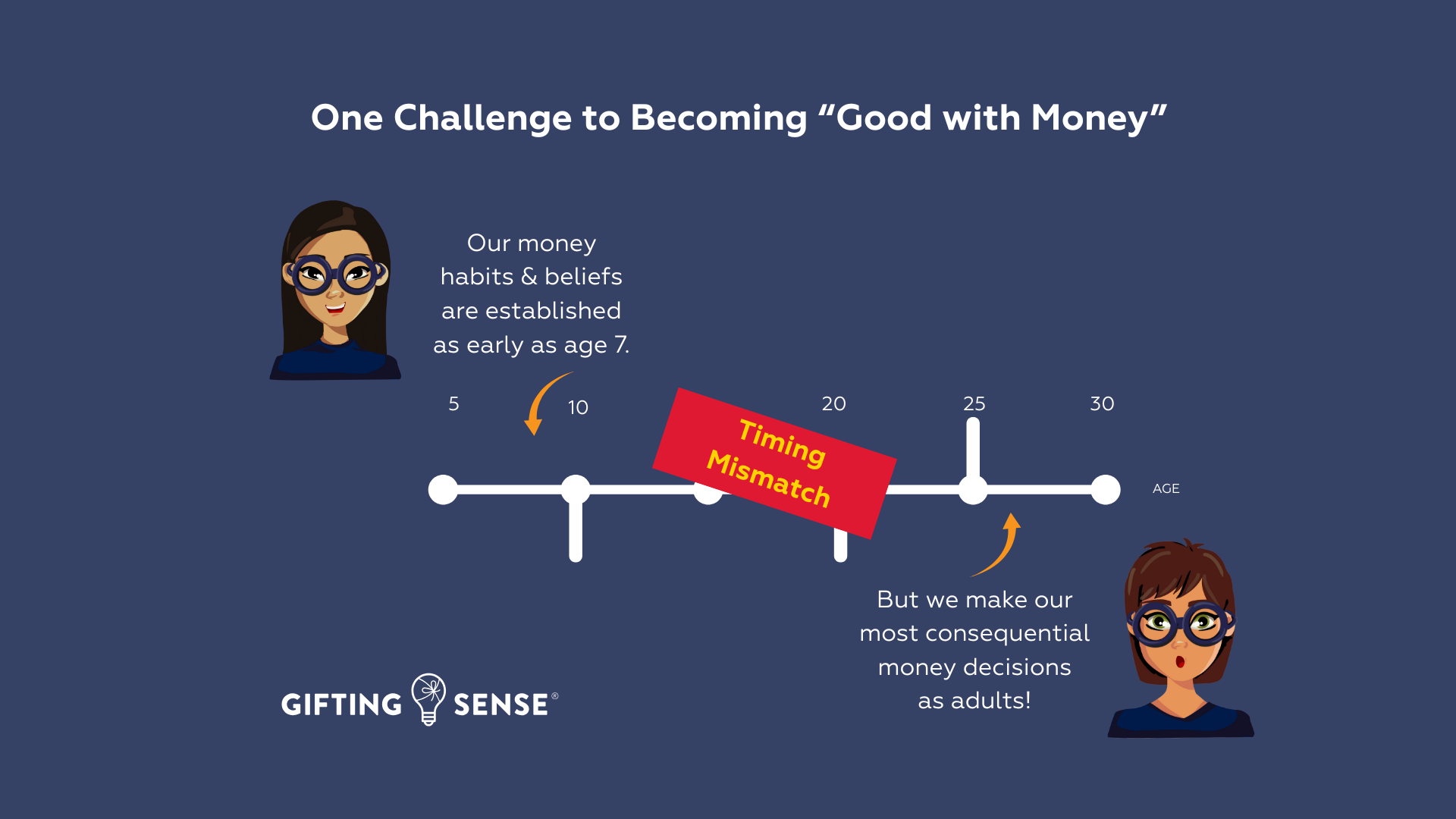Lessons on thinking before buying are one of the most natural ways to make financial information feel relevant to a young person. As teachers know, relevant information is always more engaging to a young learner.
In this article, we’re sharing the insights we have gained delivering our hands-on, interactive, in-classroom (sometimes via Zoom) workshops – to help teachers give workshops to their own students in their own classrooms. Delivering workshops isn’t hard, certainly not for a professional educator, but it does, of course, get easier as you witness where (particularly younger) students can get a bit stuck and how you can help them proceed. So please, read on. We love our job, developing and delivering this content, helping kids experience first-hand why thinking before buying is such a powerful and rewarding life skill. We hope you will, too!
First and foremost, buyer’s remorse is a universal experience. We’ve never been in a classroom where both the students and their teacher haven’t made at least one purchase they were disappointed with. So consider tapping into that memory when you are beginning – perhaps with a funny anecdote from your own life. In addition to buyer’s remorse, most of us have also received at least one birthday or holiday gift that wasn’t quite what we were hoping for – even though our spouses, parents and extended family members certainly didn’t try to spend their time or money on an item or experience that ended up being under-appreciated…
One remark that often gets the kids laughing is the rhetorical question, “Everyone here has a birthday, right?” We then ask the children if they have always just absolutely loved everything they have ever been given…not to induce a lack of gratitude, but rather the importance of only asking for things they will really use and appreciate.
From the time we enter a class to when almost every student asks their teacher “…if they can do it again” (that is, recalculate the DIMS SCORE® for a possible purchase), here is what else we have seen:
1) In their excitement, kids often neglect to agree to the terms and conditions (you must click on that box as soon as you have named the item you are calculating a DIMS SCORE® for). Don’t worry; we do not collect any personal information, nor do we sell any data; we are parents, too! The terms and conditions just keep our little organization safe from the very unlikely event that someone might blame us for a poor decision.
2) The Sales tax questions can be tricky for younger learners. Please note that if you live (or are traveling, say as part of an exchange program) outside of Canada or the United States, there is an “Other” custom sales tax field where the local rate can be input.
3) Younger learners may also need clarification between “how often” (how many times a week, month, year) they anticipate using something versus “for how long” (how many consecutive years) they’ll use an item.

4) Encourage your students to read the messages our helpful avatar delivers at various moments throughout the DIMS SCORE® Calculator. Her suggestions are road-tested. They’re the culmination of helping kids avoid disappointment, reduce waste, improve family harmony, and protect the planet across generations, cultures, and economic realities.
5) Younger kids can get stuck uploading images of wish list items. However, the image is particularly meaningful to out-of-town extended family members (such as grandparents) who may not appreciate the difference between different models or styles of, say, basketball shoes. As the adage goes, the image is”worth 1000 words.”
6) If learners do not generate a DIMS SCORE® of 8 or greater, they will be encouraged to revisit the purchase in question. They can click on the pink “Tell Me Why?” button to learn how they might be able to improve their DIMS SCORE®, which can usually be accomplished by doing a little more research.
We also find that if a calculated DIMS SCORE® isn’t as high (read close to 10) as a child would like, before they do anything, they will ask you if they can do it again. We are never discouraged by this “gaming” of the algorithm because, of course, they are learning about the importance of things like how much sales tax and shipping can add to the cost of an online purchase or the very real impact of how many actual times you will use something factors into “cost per use” – it’s all good.
Kids can use the DIMS SCORE® calculator as many times as they like. In fact, we often suggest parents have their family calculate the DIMS SCORE® for every item on a wish list and then force-rank the entries. This is a very effective way to ensure that wish-list items will actually be used and/or appreciated.
7) Shareable summaries of all the math and thinking a child has completed when using the DIMS SCORE® calculator can be printed off, texted, or emailed. Younger children can handwrite a note to accompany their shareable summary; older ones will likely want to forward it electronically.
8) We like to give kids a Gifting Sense pencil at the end of our visits. It has a reminder to use the DIMS SCORE® calculator printed right on the side. We thank teachers for welcoming us into their classroom, then flash a giant smile and ask the students to “Go old school – and remember to “sharpen their pencils” and calculate the DIMS SCORE® before they ask for or buy something!” You can do this too. Just visit the Teacher Tab and submit a request for pencils. They are free to any Educator (e.g., including home-schooling parents) who orders them.
Do you have additional questions? Have you learned something you’d like to share with us? We’d love to hear from you. Just email us at info@giftingsense.org or include your comments with your request for pencils.
We sincerely hope this article and the Teacher Tab help Educators across Canada and the United States do something a little different and fun, on maybe a Friday afternoon leading up to the holidays, without adding to your already full plates.
If you would like us to deliver a workshop to your students via Zoom, please schedule one on the Teacher Tab. We’d love to help you help your students become money-smarter kids!
Child Development Financial Literacy For Teachers Gifts & Holidays Holiday Hacks Smart Gifting



